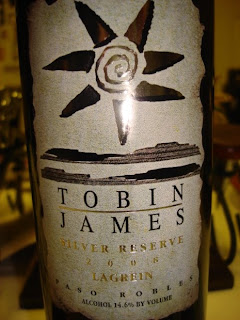 Ortrugo must truly be an obscure grape, and I can prove it. First point, there are no good pictures of it on the internet, meaning it barely exists in the Web 2.0 world. Second point, the restaurant had only bottle of this stuff and said that it’s only grown in Piacenza, which is really far west in that shaded map above (seriously, no good pics). Third and most damning point, wikipedia had the name wrong (ortruga) on the Colli Piacentini page (“hills of piacenza”) that mentioned the various grapes grown in the region, of which only Ortrugo did not have a wikipage. If I’m the one fixing the wikipage, it’s really the apocalypse of the internet.
Ortrugo must truly be an obscure grape, and I can prove it. First point, there are no good pictures of it on the internet, meaning it barely exists in the Web 2.0 world. Second point, the restaurant had only bottle of this stuff and said that it’s only grown in Piacenza, which is really far west in that shaded map above (seriously, no good pics). Third and most damning point, wikipedia had the name wrong (ortruga) on the Colli Piacentini page (“hills of piacenza”) that mentioned the various grapes grown in the region, of which only Ortrugo did not have a wikipage. If I’m the one fixing the wikipage, it’s really the apocalypse of the internet.
The restaurant wasn’t lying when they said it’s only around Piacenza. All the blogs that talk about Ortrugo grape discuss a foreigner stumbling across Ortrugo in bucolic Italy, discovering its slightly fizzy zest and having their (presumbly sun-drenched) afternoon be completed like Jerry McGuire in the elevator. My experience couldn’t have been more different. Restaurant called Uva on the UES, freezing cold outside, after work in a suit, sitting at the bar alone, waiting for a friend. Find the romance in that one, Italy. All mawkish-ness aside, this Kyle Phillips guy wrote one informative post on Ortrugo and he’d have made the RSS feed if his last post wasn’t from July 2010. Well-worth the read (ed. note: for those who read the link while it lasted), especially if you like getting an actual description of how the different types of Ortrugo taste.
Taste
At the basic level, Ortrugo can be semi-fizzy or still (frizzante or tranquilo, in what I presume is Italian). It can be straight (like all good alcoholic beverages) or blended (usually with Malvasia). My particular wine was fizzy and unblended, like a champagne gone right. I was thinking flowers and tart apple, maybe with a bit of rounder fruit like a peach, but mostly apple. Little fizzy, lot of tart, lot of apple and, not too rounded – this is definitely my style of wine. Not sure where you find this wine other than Uva.
Detail Up!
Cantine bonelli Ortrugo Fizzante
Random Googles
* Colli Piacentini wins the “Wine for Dummies” award for Emilia’s “most renowned wine district” (no really, it’s in the “Wine for Dummies” book)
* Trebbianino Val Trebbia is an important wine that only Italian wikiusers care about. It has Ortrugo and comes from Piacenza.
* Known aliases of Ortrugo include: Trebbiano Romagnolo, Altrugo, Barbesino and Vernesino Bianco.



